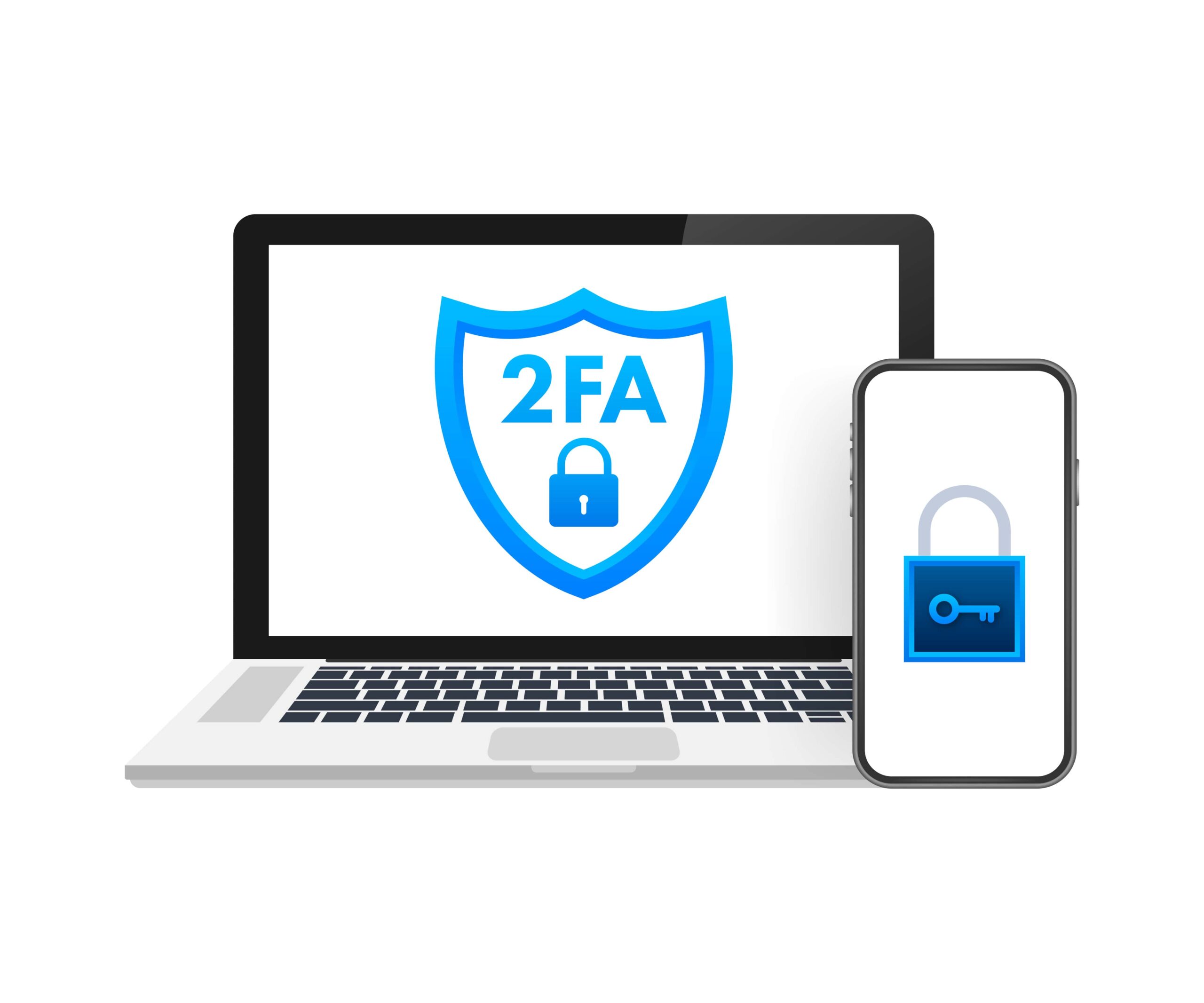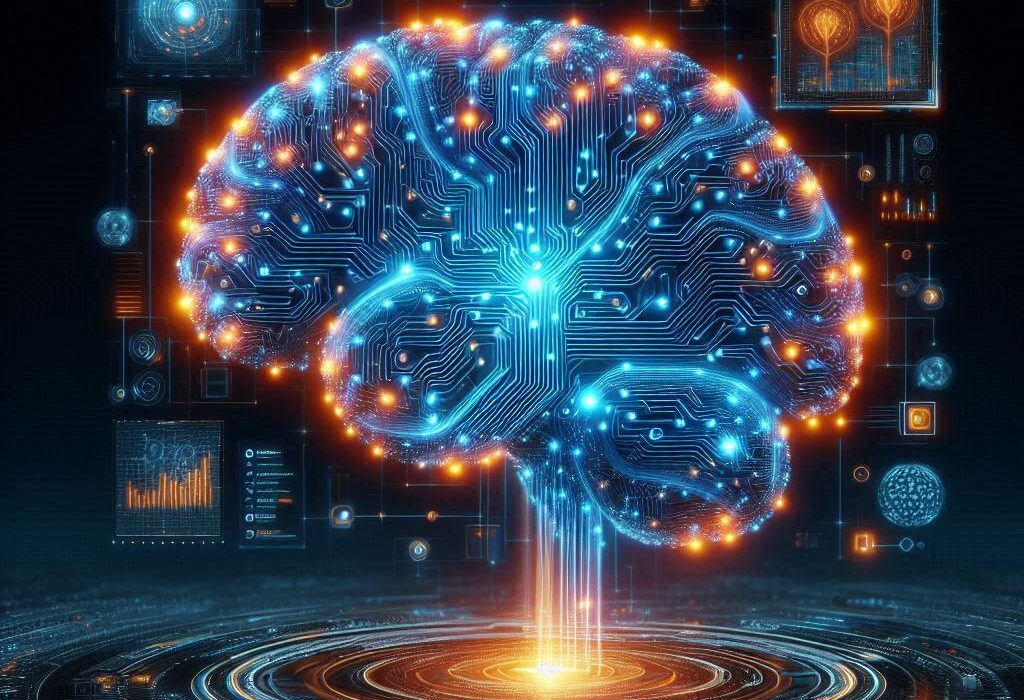In the digital age, where personal information, financial data, and professional assets are deeply integrated into online systems, the concept of identity has become both a key and a vulnerability. Passwords once stood as the sole guardians of digital identity, but as technology and cyber threats have evolved, the limitations of password-based security have become glaringly apparent. Two-Factor Authentication, or 2FA, represents one of the most effective responses to these vulnerabilities. It adds an additional layer of verification beyond the password, drastically reducing the likelihood of unauthorized access. Understanding the importance of 2FA requires a deep exploration of how authentication works, why passwords fail, and how this second factor has become essential in maintaining security and trust in a connected world.
The Evolution of Digital Authentication
The earliest digital systems relied on simple passwords to authenticate users. A password served as both a key and proof of identity. This model functioned adequately when computing environments were isolated and the number of users was small. However, as networks expanded, remote access became common, and the internet connected billions of users, passwords alone became increasingly inadequate.
In the beginning, passwords were short, simple, and easy to remember—often based on common words, names, or dates. Over time, security policies demanded complexity: longer passwords, mixed character types, and regular changes. Yet, despite stricter guidelines, breaches continued to rise. The human element—the tendency to reuse or simplify passwords—became the weakest link. Attackers exploited this vulnerability through credential stuffing, phishing, brute-force attacks, and social engineering.
The introduction of multi-factor authentication was a response to these escalating risks. Instead of relying on a single piece of information, it required a combination of factors that together were far more difficult to compromise. Two-Factor Authentication, the most widely adopted form, introduced an additional step that made attacks significantly harder to execute successfully.
Understanding the Core Principles of 2FA
Two-Factor Authentication operates on the principle of combining two different categories of credentials. The first factor is typically something the user knows—a password, PIN, or passphrase. The second factor is something the user has, such as a smartphone, a hardware token, or a one-time code generator. In some cases, the second factor can also be something the user is, involving biometric data like fingerprints, facial recognition, or voice patterns.
The idea is straightforward but powerful. Even if an attacker obtains the password through phishing or a data breach, they still need the second factor to gain access. This additional requirement creates a substantial barrier, often rendering stolen credentials useless without physical possession of the second factor or biometric access.
In essence, 2FA transforms digital authentication from a single-point defense into a multi-layered system. Each factor compensates for the other’s weaknesses. While passwords can be stolen or guessed, physical devices and biometrics are much harder to replicate or intercept remotely. This layered security structure dramatically reduces the attack surface, protecting both individual users and large organizations from a wide array of threats.
Why Passwords Alone Are Not Enough
The vulnerability of passwords lies not only in technical limitations but in human behavior. People tend to choose convenience over complexity, reusing passwords across multiple accounts or selecting easy-to-remember combinations. Even when strong passwords are used, breaches can expose them through database leaks, malware infections, or phishing schemes.
Attackers employ a range of methods to exploit password weaknesses. Credential stuffing involves using leaked passwords from one breach to access other accounts where the same credentials may have been reused. Brute-force attacks systematically guess passwords until the correct one is found, while dictionary attacks rely on lists of common words and patterns. Social engineering tricks users into willingly revealing their passwords by impersonating trusted entities or creating fake login pages.
Even organizations that enforce strong password policies cannot fully eliminate risk. The sheer number of data breaches in recent years means that billions of passwords are available for sale or trade on the dark web. Once compromised, a password can be used immediately to access sensitive data, transfer funds, or impersonate the victim.
2FA disrupts this cycle. It ensures that even if a password is compromised, it alone cannot unlock the account. The attacker would also need access to the second factor, which is often tied to a physical device or a time-sensitive code, making unauthorized access exponentially more difficult.
The Mechanics of Two-Factor Authentication
At its core, 2FA works by requiring verification through two independent methods. The most common form involves entering a password followed by a one-time passcode (OTP) sent via SMS, email, or a dedicated authenticator app. Each method functions slightly differently, but the underlying goal is the same: to ensure that the person attempting to access the account is the legitimate user.
SMS-based 2FA delivers a temporary code to the user’s registered phone number. The user enters this code to verify identity. While simple to use, SMS-based methods have weaknesses, particularly vulnerability to SIM swapping and interception. Attackers who gain control of a victim’s phone number can receive these codes and bypass the protection.
App-based authentication, using tools like Google Authenticator, Authy, or Microsoft Authenticator, is a more secure alternative. These apps generate time-based one-time passwords (TOTPs) that refresh every 30 seconds. Because they do not rely on network delivery, they are immune to SIM-related attacks and harder for attackers to intercept.
Hardware tokens and security keys represent the highest level of protection. Devices like YubiKey or Titan Security Key use cryptographic protocols to authenticate users. When inserted into a computer or tapped on a phone, these devices verify identity without transmitting sensitive information that could be intercepted.
Biometric 2FA integrates physical characteristics into the process. Fingerprint scans, facial recognition, and iris scans provide unique identifiers that are nearly impossible to duplicate. However, biometric data requires careful management since it cannot be changed if compromised.
Each method offers a different balance of security, convenience, and cost, and the most effective systems combine multiple approaches depending on context and risk level.
The Psychological and Behavioral Aspects of 2FA
Security technologies often fail not because of flaws in design, but because users resist or misunderstand them. 2FA introduces an extra step in the login process, and some users perceive this as an inconvenience. The challenge lies in designing authentication systems that enhance security without sacrificing usability.
Psychologically, users prioritize ease of access. A system that requires multiple steps may be abandoned in favor of simpler alternatives, even if those are less secure. Successful 2FA implementation therefore depends on balancing friction and protection. When users understand the rationale behind 2FA—how it protects them from identity theft, financial loss, and data breaches—they are more likely to accept and adopt it willingly.
Educational campaigns that explain the risks of password-only systems play a critical role in promoting adoption. When individuals witness the consequences of weak security, such as compromised bank accounts or stolen personal data, they become more receptive to additional safeguards. The key is to frame 2FA not as a burden, but as empowerment—an active step toward personal control over one’s digital life.
2FA in Personal Digital Security
For individuals, Two-Factor Authentication has become one of the simplest and most effective tools to protect online accounts. Major platforms—including Google, Apple, Microsoft, and social media giants—now offer 2FA as a standard feature. Activating it can prevent unauthorized access even if credentials are stolen through phishing or malware.
In personal finance, 2FA is critical. Online banking, digital wallets, and cryptocurrency exchanges are high-value targets for cybercriminals. The additional verification step prevents unauthorized transactions even when credentials are compromised. In cryptocurrency trading, where stolen keys cannot be recovered, 2FA can mean the difference between safety and complete loss of assets.
Email accounts also benefit greatly from 2FA, as they often serve as gateways to other services. Once an attacker gains control of an email account, they can reset passwords for other linked accounts. Enabling 2FA on email services creates a strong first line of defense, preventing the cascading effects of a compromised inbox.
Social media platforms, which hold vast amounts of personal information, are increasingly targeted for identity theft, impersonation, and social engineering. 2FA protects against unauthorized posts, privacy breaches, and account takeovers that can damage reputations or spread misinformation.
2FA in Enterprise and Corporate Environments
In corporate environments, where data breaches can have catastrophic consequences, 2FA has become an industry standard. It protects sensitive systems, internal communications, and financial transactions from unauthorized access.
Employees often access corporate networks remotely, using personal devices or unsecured connections. This distributed work environment increases exposure to phishing and credential theft. Implementing 2FA ensures that even if an attacker obtains an employee’s password, they cannot infiltrate the network without the second authentication factor.
Enterprise 2FA systems often integrate with centralized identity management frameworks, using tools like single sign-on (SSO) and directory services. These integrations simplify access control while maintaining strong security. Advanced systems can enforce adaptive authentication, adjusting the level of verification required based on contextual factors such as location, device, and behavior patterns.
Phishing-resistant authentication has also become a corporate priority. Security keys that use protocols like FIDO2 and WebAuthn eliminate traditional passwords altogether, replacing them with cryptographic authentication. This approach prevents credential theft and drastically reduces successful phishing attacks.
Regulatory compliance is another driver of 2FA adoption in businesses. Data protection laws such as the GDPR in Europe, HIPAA in the United States, and PCI DSS for payment systems all encourage or mandate strong authentication measures. Organizations that fail to implement 2FA risk not only security breaches but also legal and financial penalties.
The Role of 2FA in Preventing Identity Theft
Identity theft has become one of the most pervasive crimes of the digital era. Attackers use stolen credentials to impersonate victims, open fraudulent accounts, or conduct unauthorized transactions. Once identity theft occurs, recovery is often difficult and time-consuming.
2FA serves as a powerful deterrent. Even if attackers obtain login credentials through phishing, data breaches, or malware, they cannot complete the authentication process without the second factor. For criminals, this additional barrier increases the cost and effort of attack, often forcing them to move on to easier targets.
The protection offered by 2FA extends beyond financial accounts. Online health records, educational portals, and government services contain sensitive personal information that can be exploited in numerous ways. By securing these accounts with 2FA, individuals significantly reduce the risk of identity-related crimes.
The Relationship Between 2FA and Phishing
Phishing remains the most common vector for credential theft, but the effectiveness of such attacks diminishes dramatically when 2FA is in place. A phisher who tricks a user into entering their password cannot access the account without the second factor.
However, sophisticated phishing campaigns now attempt to capture both factors in real time. These attacks use proxy websites that relay credentials and one-time codes to the legitimate service immediately after the victim submits them. While these man-in-the-middle (MitM) attacks are technically advanced, they can be mitigated through phishing-resistant 2FA methods like hardware security keys.
Hardware keys use cryptographic challenge-response mechanisms that verify the authenticity of the website itself, preventing users from accidentally providing credentials to fake sites. This eliminates the possibility of MitM interception and represents the most advanced form of protection currently available.
Limitations and Challenges of 2FA
Despite its effectiveness, 2FA is not without limitations. Some users face accessibility issues due to lack of compatible devices or technical understanding. SMS-based systems, while easy to implement, are vulnerable to SIM swapping and interception. Even app-based and hardware-based methods can fail if users lose their devices or fail to back up recovery codes.
For organizations, large-scale deployment can be complex. Managing tokens, mobile devices, and authentication servers requires resources and coordination. User resistance due to perceived inconvenience can also slow adoption. In some cases, attackers exploit recovery processes—such as password reset mechanisms—to bypass 2FA indirectly.
However, these limitations are not reasons to avoid 2FA but to improve its implementation. Offering multiple authentication options, providing user education, and integrating backup mechanisms can make 2FA both robust and user-friendly.
The Future of Authentication Beyond 2FA
The future of authentication is moving beyond traditional 2FA toward passwordless systems. Technologies like FIDO2, WebAuthn, and passkeys use public-key cryptography to authenticate users without requiring passwords. These systems still embody the principles of multi-factor authentication but simplify the process by integrating it into devices and operating systems.
In passwordless authentication, the private key never leaves the user’s device, while the public key is stored on the service provider’s server. This eliminates the risk of credential theft from server-side breaches. Biometrics or device PINs unlock the private key locally, creating a seamless and highly secure experience.
Nevertheless, 2FA will continue to play a vital role for years to come. It remains the most accessible, widely supported, and cost-effective method for enhancing security across diverse platforms. The transition to passwordless systems will take time, and 2FA serves as the bridge between traditional and next-generation authentication.
The Economic and Societal Impact of 2FA
The economic benefits of widespread 2FA adoption are profound. Cybercrime costs the global economy trillions of dollars annually. A significant portion of these losses stems from credential-related breaches. By reducing unauthorized access incidents, 2FA directly cuts financial losses for individuals, corporations, and governments.
Beyond economics, 2FA strengthens digital trust. Users who feel secure are more likely to engage in online commerce, adopt digital banking, and participate in digital governance. This trust underpins the growth of digital economies and innovation in areas such as cloud computing, e-commerce, and remote work.
At a societal level, 2FA contributes to a culture of security awareness. When individuals adopt it for personal use, they internalize broader cybersecurity habits, such as vigilance against phishing and the importance of data privacy. This cultural shift is essential for building resilient digital ecosystems capable of withstanding evolving threats.
The Intersection of 2FA and Artificial Intelligence
Artificial Intelligence (AI) is reshaping both sides of the cybersecurity equation. Attackers use AI to automate phishing campaigns and mimic legitimate communication, while defenders deploy AI to detect anomalies and unauthorized access attempts. In this dynamic environment, 2FA provides a fundamental safeguard that complements AI-driven defenses.
AI systems integrated with authentication can analyze user behavior—such as typing speed, device type, and login location—to assess risk dynamically. When anomalies are detected, systems can automatically trigger additional authentication steps, effectively adapting 2FA in real time.
Future 2FA implementations may integrate biometric and behavioral factors powered by AI. Continuous authentication, for example, verifies users throughout their session by monitoring behavioral patterns. This approach blurs the line between 2FA and ongoing identity verification, offering seamless yet robust protection.
Global Adoption and Regulatory Influence
The adoption of 2FA has become a global movement, driven not only by cybersecurity necessity but also by regulation and industry standards. Financial institutions, government services, and healthcare providers are leading adopters due to strict compliance requirements.
In regions like the European Union, regulations such as the Revised Payment Services Directive (PSD2) mandate strong customer authentication for electronic payments. Similar requirements exist in North America, Asia, and Australia, reflecting a global recognition of 2FA’s importance.
Tech giants have also contributed to mass adoption by enabling 2FA by default. Platforms like Google and Apple now prompt users to enable additional verification during account setup, gradually making 2FA a norm rather than an option. As this practice becomes universal, attackers will find it increasingly difficult to exploit password-only systems.
The Human Dimension of Digital Trust
At its heart, 2FA is about restoring trust in digital interactions. Every time a user logs in, transfers money, or accesses sensitive information, they engage in an act of trust—trust that their data is protected and their identity secure. 2FA reinforces that trust by creating a tangible sense of control and security.
In an age where data breaches dominate headlines and privacy concerns escalate, users crave reassurance that their digital identities are safe. Two-Factor Authentication delivers this assurance not through secrecy, but through transparency and layered defense. It reminds users that while technology may evolve, responsibility for security remains shared between systems and their users.
Conclusion
Two-Factor Authentication stands as one of the most effective and practical defenses against the rising tide of cyber threats. It bridges the gap between convenience and security, turning the act of authentication from a vulnerability into a strength. By combining something we know with something we have or are, 2FA transforms identity verification into a robust, multi-dimensional process.
Its importance extends beyond individual protection to encompass the security of organizations, economies, and societies. As technology advances and cybercriminals grow more sophisticated, the simple act of enabling 2FA remains a powerful countermeasure—a reminder that even in the complex world of cybersecurity, layered simplicity can provide the strongest defense.
In the end, Two-Factor Authentication is not merely a tool; it is a mindset—a commitment to safeguarding the digital world we have built. Its widespread adoption reflects a collective understanding that while technology may evolve, security begins with human awareness and the willingness to take one extra step toward protection.






